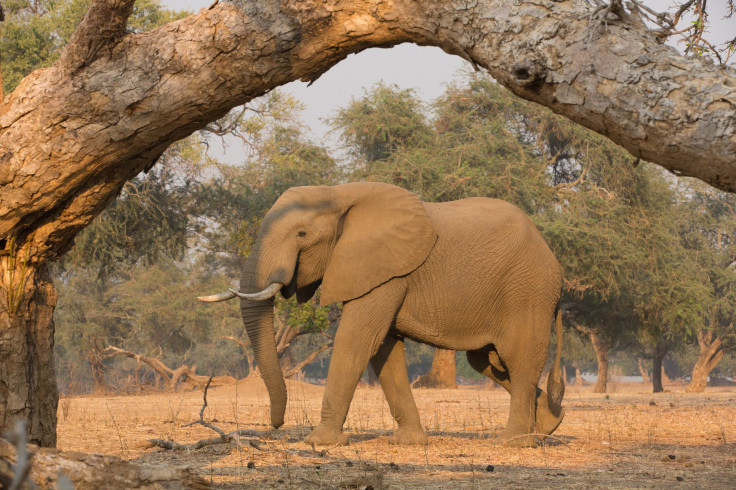Elephant Poaching In Africa Connected To High Rates Of Infant Mortality, Poverty

Elephant poaching in Africa, an industry growing to meet demands for ivory around the world and especially in Asia, has in the past been associated with poverty, corruption, as well as increased rates of infant mortality.
Recently, researchers attempted to create some hard data regarding this link between poaching and child deaths in poverty-stricken areas, hoping to shine some light on the negative consequences of the illegal ivory trade. The research, which was presented at an African elephant summit in Botswana last month, showed a clear connection for the first time between elephant poaching and child deaths. The research was completed by several conservation groups such as TRAFFIC, the International Union for Conservation of Nature, and the Convention on International Trade in Endangered Species.
Reuters reports that most of the places where infant mortality and poverty are highest also see plenty of elephant poaching, but poverty-stricken villagers often do not benefit from the industry. “[T]he ivory trade — with its long and blood-stained history,” Ed Stoddard writes on Reuters, “is similar to other extractive industries in Africa, which have been exploited to meet demand elsewhere with few rewards for local people.”
The report measured infant mortality rates, by counting the number of child deaths under the age of one per every 10,000 live births. “Human infant mortality, which is interpreted as a proxy for poverty, is the single strongest site-level correlate … with sites suffering from higher levels of poverty experiencing higher levels of elephant poaching,” the report stated. “This suggests that there may be a greater incentive to facilitate or participate in the illegal killing of elephants in areas where human livelihoods are insecure. Furthermore, this relationship highlights a close linkage between the well-being of people and that of the elephant populations with which they coexist.”
Infant mortality occurs when a baby under the age of 1 dies, usually due to serious birth defects, preterm births, or pregnancy complications. In poorer countries, where pregnant women have little to no access to medical aid, the rate of pregnancy complications and infant deaths is higher. According to the World Bank, Angola, the Republic of Congo, and Somalia were among the countries with the highest infant mortality rates.
Elephant poaching, though it had declined in the 1990s, has risen dramatically in recent years. In June 2012, TRAFFIC reported that elephant poaching levels were “the worst in a decade and recorded ivory seizures are at their highest levels since 1989.” In the same report, TRAFFIC noted that China and Thailand are the two primary destinations for the illicit ivory trade being exported from Africa. Back in 2012, conservation groups had already linked poverty to poaching. “MIKE [Monitoring the Illegal Killing of Elephants] analysis shows poaching to be highest where human livelihoods are most insecure and where… law enforcement [is] weakest,” Julian Blanc, coordinator of the United Nations-backed MIKE program, said in the TRAFFIC report. However, this is the first time that a report has clear statistics to back up this claim.
The areas with the highest rates of infant mortality include Ziama in Guinea, Niassa Province in Mozambique, and Bangassou in the Central African Republic, the researchers found in the recent report. These places had an infant mortality rates ranging from 1,240 to 1,400 deaths per 10,000 births. These three areas also had unusually high poaching rates.



























